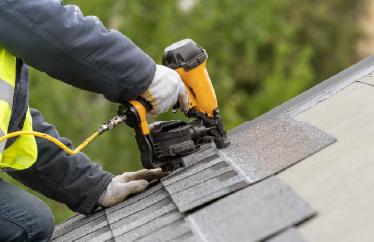Summer mean time to DIY so make sure they are fixes that help your home year-round.
Summer is coming. The weather is improving and you may soon have more time on your hands. Besides relaxing and preparing for your next vacation, make sure you take inventory of what needs to be fixed around the house.
Most homeowners know that large-scale upgrades can potentially lower their monthly home insurance premiums. But did you know there are DIY home improvement projects that can also save you a lot of money?
By being proactive, you can boost your home’s value and improve your property’s appearance. Here are seven projects you should add to your to-do list. Some of them can be finished in just a few hours. Best of all, they’ll yield benefits for years (and summers) to come!
Check your sump pump
Sump pumps collect groundwater and send it away from your home. If yours stops working and water seeps into your home, you could end up with a flooded basement. Mold could also start growing inside of your house.
Typically, sump pumps last for about 10 years. But checking yours regularly is a good idea. You can test your sump pump by running water through it. Add enough to raise the float so that the pump kicks on. Then, watch and make sure all of the water gets pumped out. Finally, check the outside pipe that transports water and remove any dirt or debris clogging it.
Install a programmable thermostat
Smart devices can help your home run more efficiently. By investing in one, you’ll waste less energy.
With a programmable thermostat, you can set your home’s temperature no matter where you are through an app on your smartphone. You can also set it so that it drops a few degrees while you’re sleeping or you’re away from home. Some smart thermostats make adjustments based on your local weather forecast and what they learn about your personal preferences. By purchasing a programmable thermostat, you can save as much as $180 each year.
Start planting
Landscaping adds more than cosmetic value. It’s one way to limit erosion and keep water from flowing into your home. Plant a rain garden to recharge groundwater and prevent water supply problems. Thirsty grasses, irises and Black-eyed Susans absorb water best. Hedges, trees and other tall vegetation also prevent waterlogging and issues with excessive soil moisture.
If you have any dry patches of soil, add mulch. It holds moisture and reduces the amount of time it takes to water your soil, saving you time and money. Mulch also keeps weeds from growing.
Clean your gutters
Clogged gutters trap water in places it shouldn’t be. In the worst case scenario, you could find yourself with a damaged foundation, stained walls or a pest infestation. To avoid those kinds of problems, you’ll probably have to clean your gutters more than once a year. Remove any debris and ensure that all downspouts direct water away from your home. While you’re at it, trim any branches, leaves and foliage that could re-clog the gutters when summer ends and fall arrives.
Find and seal air leaks
Now that spring is here and summer is on the way, you’re probably already spending money on air conditioning, fans and other services that keep you cool. To avoid wasting your hard-earned dollars this season, you’ll need to make sure you aren’t letting any precious (and costly) air leak out.
Walk around your entire home and seal any cracks around your windows and doors using caulking tubes and felt or foam tape weatherstripping. Comprehensive sealing measures can save homeowners as much as 20% on cooling costs in the summer and heating costs in the winter.
Caulk your bathroom and kitchen
As you check for cracks in your windows and doors, you’ll want to make sure your water fixtures are properly sealed, too. A homeowner with a leaking pipe might have to deal with water damage, mildew and other problems. Buying a tube of caulk is much cheaper than replacing drywall or tile covered in mold.
As you add caulking, smooth it down to create a tight seal. We recommend using a product with fungicide to prevent mold. Just keep in mind that caulking can take a few days to dry.
Wrap your water heater
It’s best to check your water heater at least once a year. First, make sure it isn’t leaking. And if you haven’t already done so, insulate your water heater. Energy.gov estimates that insulation could reduce standby heat losses by as much as 45% and lower your utility costs by as much as 16%. You can find water tank heater insulation jackets and blankets at hardware stores that cost about $20.
Even if you can purchase a water heater that comes with a blanket or jacket, it’s wise to ensure that there’s sufficient insulation. Energy.gov suggests checking to make sure your heater has insulation with an R-value (resistance to heat flow) of at least 24.
Final word
Each of the projects we’ve mentioned is relatively inexpensive and won’t hog too much of your valuable weekend or vacation time. Even if a project takes longer than expected, at least you’ll be protecting your home from future losses. Just remember to wear sunscreen and stay hydrated if you’ll be working outside. You can also implement a budgeting system to save even more money for your future projects.




